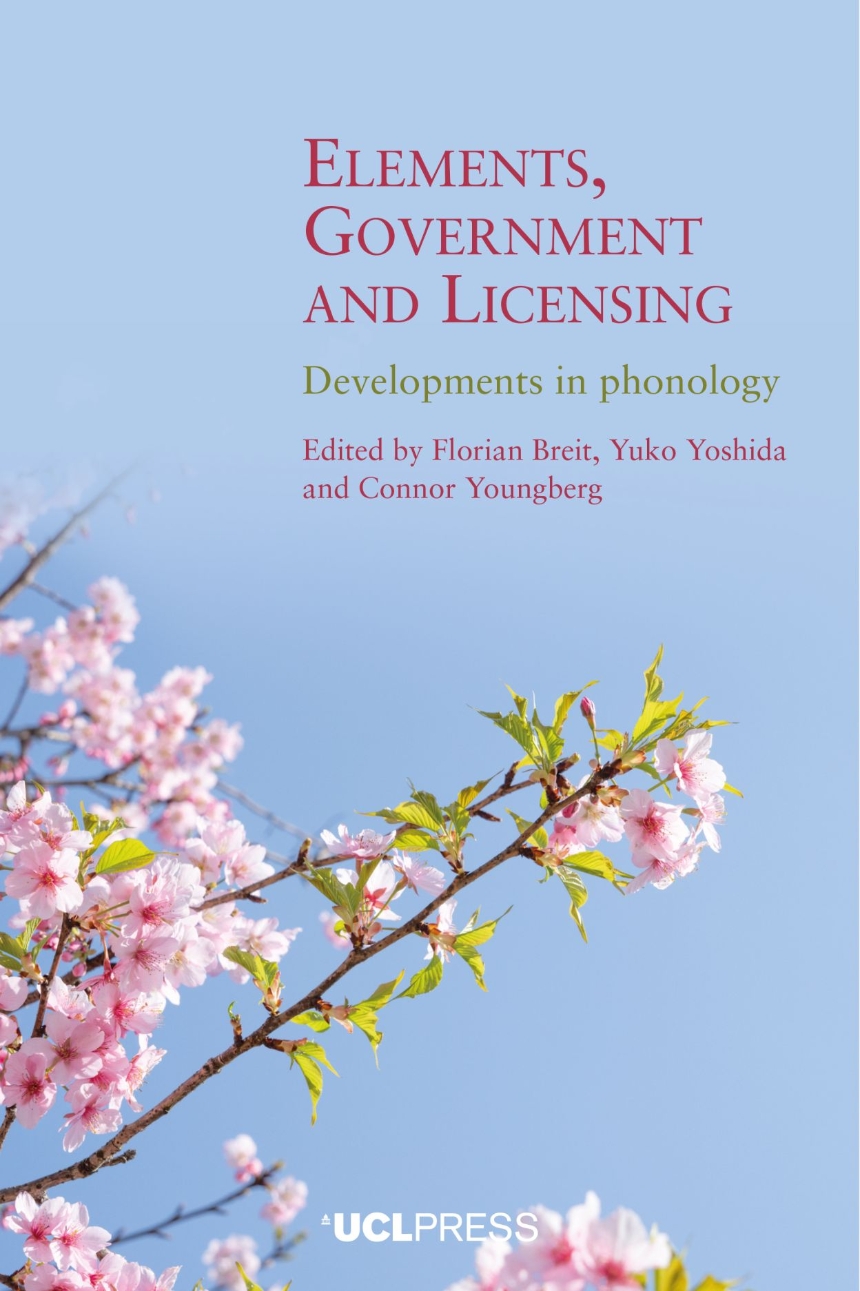Bringing together new theoretical and empirical developments in phonology.
Elements, Government and Licensing covers three principal domains of phonological representation: melody and segmental structure; tone, prosody, and prosodic structure; and phonological relations, empty categories, and vowel-zero alternations. Theoretical topics covered include the formalization of Element Theory, the hotly debated topic of structural recursion in phonology, and the empirical status of government.
In addition, a wealth of new analyses and empirical evidence sheds new light on empty categories in phonology, the analysis of certain consonantal sequences, phonological and non-phonological alternation, the elemental composition of segments, and many more. Taking up long-standing empirical and theoretical issues informed by the Government Phonology and Element Theory, this book provides theoretical advances while also bringing to light new empirical evidence and analysis challenging previous generalizations.
The insights offered here will be equally exciting for phonologists working on related issues inside and outside the Principles and Parameters program, such as researchers working in Optimality Theory or classical rule-based phonology.
Elements, Government and Licensing covers three principal domains of phonological representation: melody and segmental structure; tone, prosody, and prosodic structure; and phonological relations, empty categories, and vowel-zero alternations. Theoretical topics covered include the formalization of Element Theory, the hotly debated topic of structural recursion in phonology, and the empirical status of government.
In addition, a wealth of new analyses and empirical evidence sheds new light on empty categories in phonology, the analysis of certain consonantal sequences, phonological and non-phonological alternation, the elemental composition of segments, and many more. Taking up long-standing empirical and theoretical issues informed by the Government Phonology and Element Theory, this book provides theoretical advances while also bringing to light new empirical evidence and analysis challenging previous generalizations.
The insights offered here will be equally exciting for phonologists working on related issues inside and outside the Principles and Parameters program, such as researchers working in Optimality Theory or classical rule-based phonology.
Table of Contents
List of figuresList of tablesList of symbols and abbreviationsNotes on contributors
1 IntroductionConnor Youngberg, Yuko Yoshida &
Florian Breit
Part I: Melody and
segmental representation2 Melody and segmental representation: a
brief introductionFlorian Breit3 On hedgehogs and gold in Bavarian:
l-vocalisation in Upper Austrian GermanSabrina Bendjaballah4 Sets of (sets of) elementsFlorian Breit5 Production-bias and substance-free
representation of laryngeal distinctionsEugeniusz Cyran
6 The no-crossing constraint – a neglected
licensing constraintJohn R. Rennison
Part II: Prosody and constituent
structure7 Prosody and constituent structure: a
brief introductionYuko Yoshida
8 Prevocalic tenseness in English, binarity
and the typology of long vowel
distributionsKatalin Balogné Bérces & Shanti Ulfsbjorninn
9 Vowel length and prominence in Cairene
ArabicRadwa Fathi
10 #sC in stereo: a dichotic-listening study
of Cypriot Greek initial consonant clustersJohn Harris & Faith Chiu
11 The segholate verbs of EnglishJean Lowenstamm
12 From me to [ju?]: on government licensing
and light diphthongsMarkus Pöchtrager
13 Licensor tier and culminativityYuko Yoshida
Part III: Emptiness,
schwa, and epenthesis
14 Emptiness, schwa, and epenthesis: a brief
introductionConnor Youngberg
15 Turbid governmentEdoardo Cavirani
16 Word-final onsets: a Brazilian Portuguese case
studyThaïs Cristófaro Silva
17 A note on the svarabhakti vowels in
Connemara IrishMichael Kenstowicz
18 Domino effects and licensing chains in
government licensing: sequential NC clusters in BantuNancy C. Kula
19 C?Cj in FrenchTobias Scheer
20 The prince and the nymph: interconsonantal
plosive–zero alternation in EnglishPéter Szigetvári
Part IV: Prosodic
structure and recursion
21 Structure and recursive approaches: a brief
introductionConnor Youngberg & Florian Breit
22 Nasal vowels in French: a precedence-free
approachPhilip Backley & Kuniya Nasukawa
23 Recursive syllable structure in RCVPHarry van der Hulst
Index
1 IntroductionConnor Youngberg, Yuko Yoshida &
Florian Breit
Part I: Melody and
segmental representation2 Melody and segmental representation: a
brief introductionFlorian Breit3 On hedgehogs and gold in Bavarian:
l-vocalisation in Upper Austrian GermanSabrina Bendjaballah4 Sets of (sets of) elementsFlorian Breit5 Production-bias and substance-free
representation of laryngeal distinctionsEugeniusz Cyran
6 The no-crossing constraint – a neglected
licensing constraintJohn R. Rennison
Part II: Prosody and constituent
structure7 Prosody and constituent structure: a
brief introductionYuko Yoshida
8 Prevocalic tenseness in English, binarity
and the typology of long vowel
distributionsKatalin Balogné Bérces & Shanti Ulfsbjorninn
9 Vowel length and prominence in Cairene
ArabicRadwa Fathi
10 #sC in stereo: a dichotic-listening study
of Cypriot Greek initial consonant clustersJohn Harris & Faith Chiu
11 The segholate verbs of EnglishJean Lowenstamm
12 From me to [ju?]: on government licensing
and light diphthongsMarkus Pöchtrager
13 Licensor tier and culminativityYuko Yoshida
Part III: Emptiness,
schwa, and epenthesis
14 Emptiness, schwa, and epenthesis: a brief
introductionConnor Youngberg
15 Turbid governmentEdoardo Cavirani
16 Word-final onsets: a Brazilian Portuguese case
studyThaïs Cristófaro Silva
17 A note on the svarabhakti vowels in
Connemara IrishMichael Kenstowicz
18 Domino effects and licensing chains in
government licensing: sequential NC clusters in BantuNancy C. Kula
19 C?Cj in FrenchTobias Scheer
20 The prince and the nymph: interconsonantal
plosive–zero alternation in EnglishPéter Szigetvári
Part IV: Prosodic
structure and recursion
21 Structure and recursive approaches: a brief
introductionConnor Youngberg & Florian Breit
22 Nasal vowels in French: a precedence-free
approachPhilip Backley & Kuniya Nasukawa
23 Recursive syllable structure in RCVPHarry van der Hulst
Index

